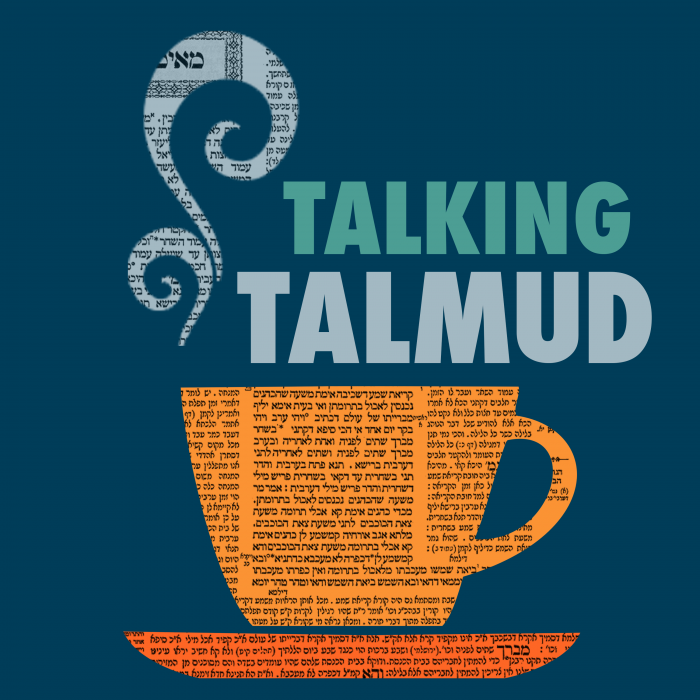After another braita is brought to raise a difficulty against Reish Lakish’s explanation of the other braita regarding hefker, that it was entirely Rabbi Yosi’s opinion, the Gemara brings a second resolution in which they distinguish between hefker that is done in front of two people and hefker that is done in front of three. To strengthen the resolution, they bring Rabbi Yochanan’s words, who quoted from Rabbi Shimon ben Yehotzedek, who said that hefker made in front of two people is not hefker. Rabbi Yehoshua ben Levi disagrees and believes that the hefker even in front of one is hefker by Torah law, and only by rabbinic law, it must be done in front of three so that one will take the item and two can testify about that. If two people are forbidden to benefit from each other, and they live in the common yard, are they allowed to go into the courtyard? The rabbis and Rabbi Eliezer ben Ya’akov disagree on this matter.
Nedarim 45
Share this shiur:
Want to dedicate learning? Get started here:


Summary
Today’s daily daf tools:
Today’s daily daf tools:
Delve Deeper
Broaden your understanding of the topics on this daf with classes and podcasts from top women Talmud scholars.
New to Talmud?
Check out our resources designed to help you navigate a page of Talmud – and study at the pace, level and style that fits you.
The Hadran Women’s Tapestry
Meet the diverse women learning Gemara at Hadran and hear their stories.
Nedarim 45
אִיבָּעֵית אֵימָא: הָא דְּאַפְקְרֵיהּ בְּאַנְפֵּי תְרֵין, וְהָא דְּאַפְקְרֵיהּ בְּאַפֵּי תְלָתָא. דְּאָמַר רַבִּי יוֹחָנָן מִשּׁוּם רַבִּי שִׁמְעוֹן בֶּן יְהוֹצָדָק: כׇּל הַמַּפְקִיר בִּפְנֵי שְׁלֹשָׁה — הָוֵי הֶפְקֵר, בִּפְנֵי שְׁנַיִם — לָא הָוֵי הֶפְקֵר.
If you wish, say instead: That baraita, in which it is taught that the item does not leave the possession of the owner until it enters the possession of another, is referring to a case where one declared it ownerless before two people; and this baraita, in which it is taught that the item is ownerless when it is declared ownerless, is referring to a case where one declared it ownerless before three people. As Rabbi Yoḥanan said in the name of Rabbi Shimon ben Yehotzadak: With regard to anyone who declares an item ownerless before three people, that item is ownerless; if he does so before two people, it is not ownerless.
וְרַבִּי יְהוֹשֻׁעַ בֶּן לֵוִי אָמַר: דְּבַר תּוֹרָה אֲפִילּוּ בְּאֶחָד — הָוֵי הֶפְקֵר, וּמַה טַּעַם אָמְרוּ בִּשְׁלֹשָׁה, כְּדֵי שֶׁיְּהֵא אֶחָד זוֹכֶה וּשְׁנַיִם מְעִידִין.
And Rabbi Yehoshua ben Levi said: By Torah law, even with one person, the item is ownerless, and what is the reason that the Sages said that ownerless status must be declared with three people? It is so that one will take possession of the item and two will testify that the item was declared ownerless and that it was acquired by that person. It is not a requirement fundamental to the declaration of ownerless status.
הַדְרָן עֲלָךְ אֵין בֵּין הַמּוּדָּר
MISHNA: Partners who vowed not to derive benefit from one another are prohibited from entering into a courtyard that they jointly own, since each one has a portion in it and benefits from the share owned by the other, thereby leading to a violation of the vow. Rabbi Eliezer ben Ya’akov says: It is permitted for both to use the courtyard, as it can be said that since each has a portion in the courtyard; this one enters into his own portion and that one enters into his own portion.
הַשּׁוּתָּפִין שֶׁנָּדְרוּ הֲנָאָה זֶה מִזֶּה — אֲסוּרִין לִיכָּנֵס לֶחָצֵר. רַבִּי אֱלִיעֶזֶר בֶּן יַעֲקֹב אוֹמֵר: זֶה נִכְנָס לְתוֹךְ שֶׁלּוֹ, וְזֶה נִכְנָס לְתוֹךְ שֶׁלּוֹ.




















